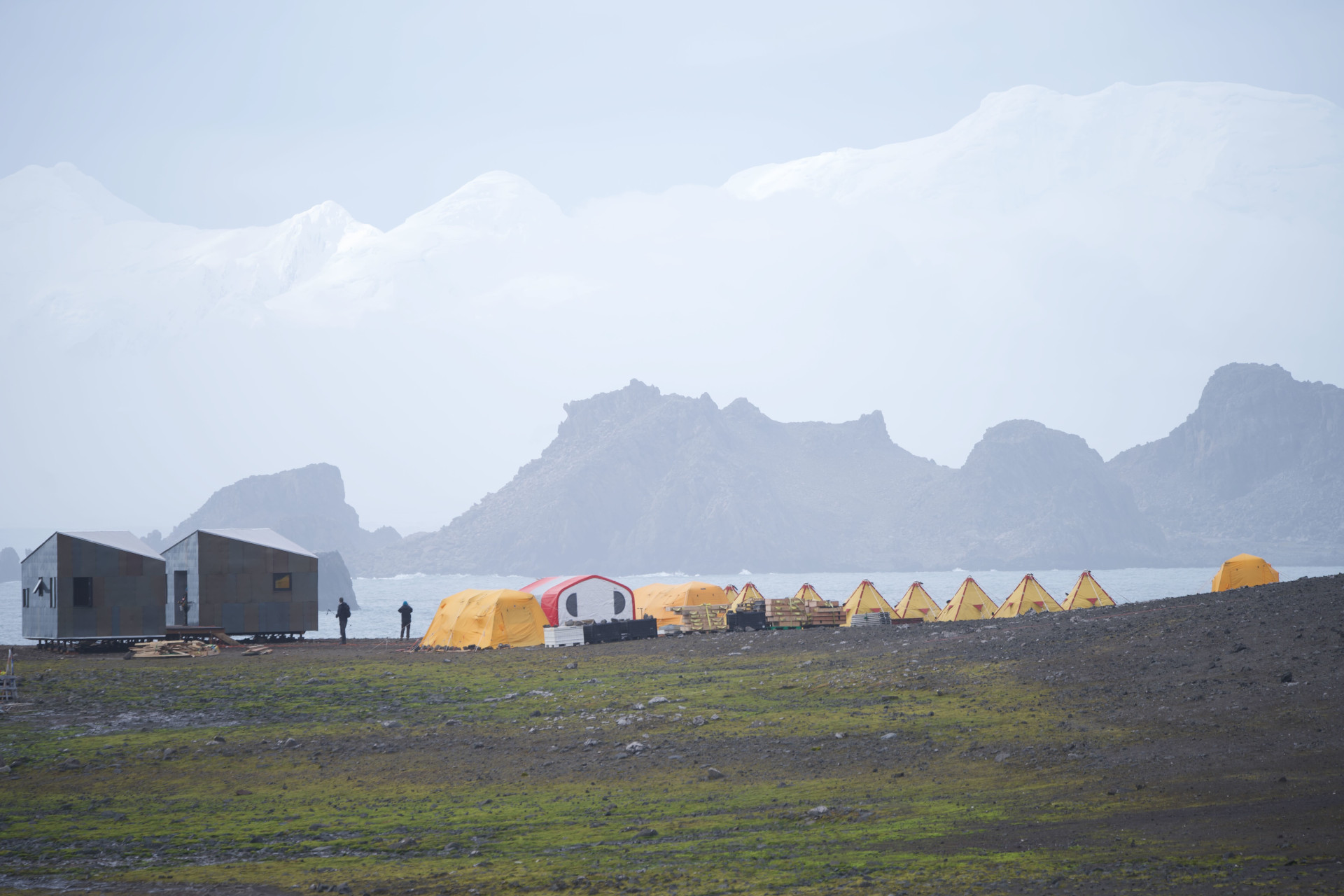ArcWest Architects associate, Cody Van Holland, recently spent two months living in Antarctica with fellow alumni from the CU Denver College of Architecture and Planning. ArcWest supported Cody in this exciting endeavor, and we asked him to share his experience, which he recounts here.

“Our goal was to construct two structures for NOAA (National Oceanographic and Atmospheric Administration). The first structure was for sleeping (berthing) and the other was for a kitchen/living/food storage (Galley). We were also in charge of demolishing an existing bird blind to prepare for the next crew to come in and construct a workshop and new bird blind. The main research is done on seals and birds in the area.
We flew into Punta Arenas, Chile, where we were briefed and prepared to spend two months sleeping in tents on the coast of Antarctica. My wife, Kristina and I were two of seven alumni selected to work with contractors from Bespoke Project Solutions at Cape Shirreff. More than 40 alumni applied. From Punta Arenas we flew into Antarctica on King George Island where we took a boat to Cape Shirreff. On the way back we took a boat from Cape Shirreff through the drake passage to Punta Arenas. This trip takes around four days in some of the roughest water in the world.

A typical day on the island was working all day. Get up around 7:30am, eat breakfast, and work until around 7:30pm with lunch and snack breaks throughout the day. Time is extremely hard to judge because we had around 16-20 hours of daylight. During the construction we were able to experience the area and take hikes with the scientists on site to learn about the process and studies they do.
The structures themselves took around three months to get down to site and two weeks to offload the boat. The whole project was a logistical nightmare, but the structures were completed. The structures were built out of structurally insulated panels for the floors, walls, and roofs to help maintain temperatures. The roof and exterior cladding were metal with the interior being all wood. The structures were lifted three feet off the ground to keep the structure out of the harsh elements. More than 26 4-foot-long metals stakes were used to anchor the structures to the ground.

Average temperatures were around 25-35 degrees with the wind ranging from 10 to 65 mph. It was not so much the snow, but rather the wind and rain were the harshest of the elements. The humidity in this location is 90%. During this time we had no showers and our sleeping arrangements were cots in a tent. During this it wasn’t uncommon to wake up to seals and penguins around your tents.”
Get an update (February 2024) on this project, now complete, from CU Denver News.
